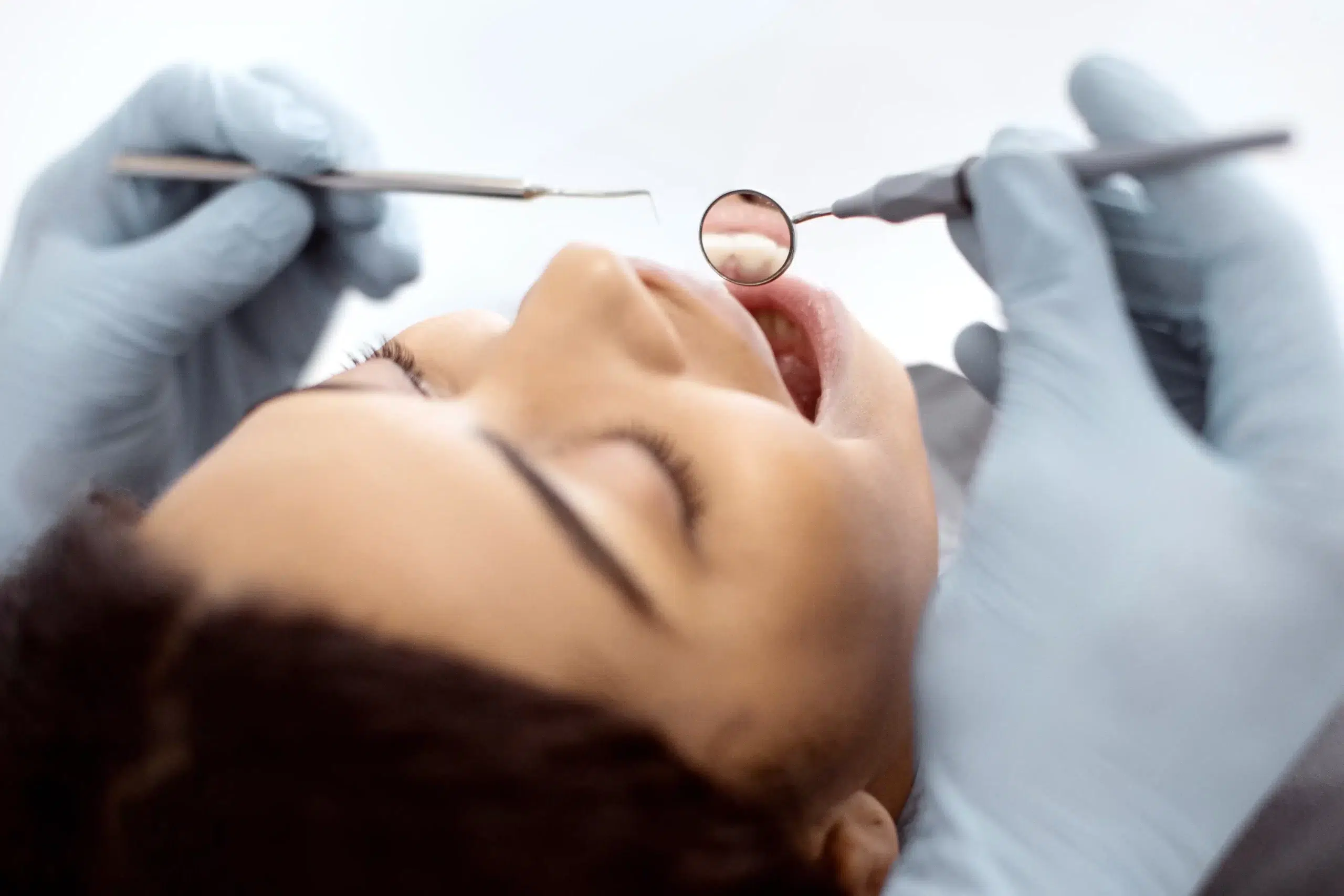How is gum treatment performed? The treatment begins with a dentist examination and is applied when inflammation, plaque, or tartar buildup is detected on the gums. The purpose of this procedure is to support the healthy attachment of the gums to the teeth. If necessary, root surface smoothing, laser treatment, or surgical interventions may be used. The treatment not only provides an aesthetic appearance but also helps prevent tooth loss.
How is gum treatment performed? The treatment is carried out in stages, and the patient is expected to maintain proper oral hygiene throughout the process. To increase the success of the treatment, regular brushing, flossing, and the use of antiseptic mouthwash are recommended. After completing the treatment, the condition of the gums is monitored at regular intervals. In advanced cases, surgical methods such as flap surgery may be required. With this operation, the gums can be reshaped, and healthy tissue can be restored.
Gum Treatment
There are several methods applied to protect the supporting tissues of the teeth, especially the gums. One of these methods is gum treatment.
Gum disease occurs as a result of plaque and tartar buildup and manifests with inflammation. If this problem is not treated in its early stage, it may progress to more advanced forms of periodontal disease. Delaying treatment can lead to tooth loss, jawbone resorption, and aesthetic concerns.
The form of treatment in gum diseases varies depending on the type and severity of the disease. Therefore, treatment is planned by evaluating these factors together. The main goal of treatment is to ensure a healthy tooth–gum connection, reduce bacterial load, and maintain oral hygiene in the long term.
During the treatment stage, dentists apply a multi-step approach. First, a detailed examination is carried out by the dentist. If symptoms such as bleeding, swelling, or discoloration of the gums are present, they are evaluated. Then, the surfaces of the teeth and infected areas beneath the gums are cleaned. If necessary, root surfaces are smoothed, and inflammation is brought under control.
Steps that may be included in the treatment process are:
- Removal of dental calculus and bacterial plaque
- Smoothing of rough surfaces on the tooth roots
- Elimination of infected tissues to restore healthy gum tissue
- Bone grafting when required for support
After completing these steps, the patient is given daily oral care training. This training ensures that care is maintained with proper brushing techniques and flossing. With this approach, gum problems can largely be treated, and the risk of recurrence is reduced in the future.

What is Gum Treatment?
Gum diseases often begin with gum inflammation. If this inflammation is left untreated, the disease progresses. At advanced stages, gum disease can cause irreversible damage to the gums.
The main goal of gum treatment is to stop the progression of the disease and restore the gums to their former health. The most important first step in the treatment process is to identify and eliminate the source of the inflammation. Regular cleaning procedures, root surface smoothing, and surgical interventions when necessary serve this purpose.
The treatment plan is determined based on individual factors. In some patients, a simple cleaning is sufficient, but in advanced cases, surgical techniques such as flap operations or guided tissue regeneration may be necessary. By cleaning the infected tissues beneath the gums, tooth retention is improved, and future tooth loss can be prevented.
Patient–dentist cooperation is very important during the treatment process. After treatment, regular brushing, flossing, and the use of antiseptic mouthwash are crucial to support the results. By performing these maintenance practices regularly, the risk of recurrence of gum problems is reduced. Regular dental check-ups should be carried out after treatment, and supportive cleaning procedures should be performed if necessary.
With all these precautions, it is possible to protect gum health in the long term, which also contributes positively to overall oral health.
Gum Recession Treatment
Gum recession is a condition where the gums move away from the tooth, exposing the root surface. This condition is characterized by increased sensitivity, teeth appearing longer, and sometimes aesthetic concerns. The treatment plan is determined according to the degree and cause of the recession.
In mild cases, regular cleaning and proper oral hygiene may be sufficient, but in more severe cases, surgical intervention may be required. With flap surgery, connective tissue grafts, and regenerative procedures supported by bone grafts, the gum tissue can be restored. This protects the teeth and reduces the risk of tooth loss.
In the long term, regular care should be maintained, and dietary habits should be reviewed. Reducing the consumption of sugary and acidic beverages contributes positively to gum health. In this way, recurrence of gum recession is prevented, and overall oral health is preserved for a long time.
For detailed information about gum treatment and the methods applied, you can contact Elşen Yusufoğlu’s clinic.
